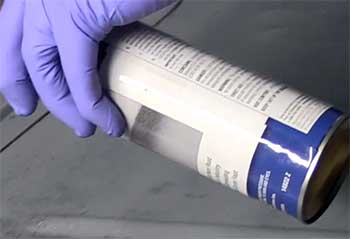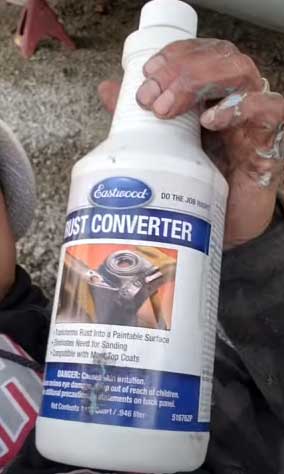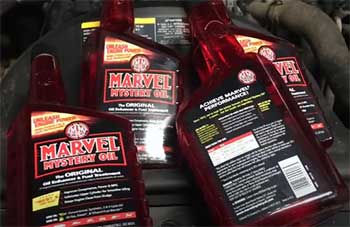When it comes to rust, it’s a battle I know all too well. I wanted to restore the longevity of my metal surfaces without spending a fortune or compromising on quality, and I found that Eastwood Rust Encapsulator might just be the answer.
If you’re in the market for a product that effectively stops rust and keeps it from coming back, stick around. I’ll walk you through my experience, pros and cons, and maintenance tips.
By the end of this, you’ll have a solid idea of why Eastwood Rust Encapsulator might be the perfect choice for you.
My Experience With Eastwood Rust Encapsulator
Honestly, when I first came across the Eastwood Rust Encapsulator, I had my fair share of skepticism. Rust is not something that simply disappears after a magic coating; it needs a product that gets right to the core.

So, I decided to put this product to the test on a few different projects—from an old car frame to a metal chimney cover, and even a set of vintage patio furniture.
The encapsulator comes as a thick liquid, which I found made it easy to manage.
It wasn’t too runny, which meant that it wasn’t dripping everywhere while I worked.
I used a stiff wire brush to remove as much of the loose rust as possible, then applied the encapsulator with a brush.
The instructions say you can use a brush, roller, or spray, but I found brushing worked well for the level of detail I needed.
After the first coat, I noticed that the product really penetrated into the rusted surface. One of the great things about this encapsulator is that it doesn’t just sit on the surface—it actually gets into those small cracks and crevices, which is key for preventing rust from spreading further.
I used it for restoring an old trailer that had definitely seen better days. After prepping the surface and applying two coats of Eastwood Rust Encapsulator, it was honestly like looking at a brand-new trailer again.
I was equally impressed with how well it handled the restoration of my vintage Salterini peacock chairs—an antique piece that had a lot of sentimental value for me.
But I have to mention, don’t make the same mistake I did by underestimating how stubborn this stuff is once it dries. It’s great that it sticks to metal so well, but it also sticks to skin—latex gloves are a must!
Trust me, the scrubbing process is not one you want to put yourself through.
Also Read: Is Superzilla Rust Remover Worth It?
Pros of Eastwood Rust Encapsulator

- Ease of Application: The Rust Encapsulator is versatile in how it can be applied. Whether you prefer to brush it on, spray it, or roll it, you’ll find that this product is quite user-friendly. Personally, I used a brush for most of my projects and found that the thicker consistency made it easy to control. Plus, the product doesn’t have a long waiting time, so you’re not standing around waiting for hours between coats.
- Deep Penetration: This is not a superficial solution—it gets right into the rust. When working on my antique truck chassis, I noticed that the encapsulator managed to seep into all those nooks and crannies, ensuring that there’s no place for the rust to hide and thrive. That’s essential if you want long-term results.
- Rust Prevention and Protection: This product doesn’t just encapsulate the existing rust—it also provides a protective coating to help prevent future rust. My trailer has been out in the elements for months now, and it still looks just as good as it did on the day I applied the encapsulator. That’s a huge win in my book.
- High Heat Resistance: One unexpected benefit is that the encapsulator can handle high temperatures—up to 350 degrees Fahrenheit. That’s great if you’re using it near the engine bay or on parts exposed to heat, like I did with my old truck.
- Great Coverage: You’d be surprised at how far a can of Eastwood Rust Encapsulator goes. I’ve done two full vehicles and still have a significant amount left, which makes the price point feel a lot more reasonable.
Cons of Eastwood Rust Encapsulator
- Stubborn to Remove from Skin: This product is extremely stubborn if you get it on your skin. I made the rookie mistake of working without gloves once, and I definitely paid for it. Mineral spirits helped a little, but the effort required to get it off was not worth it—lesson learned!
- Price Point: Eastwood Rust Encapsulator isn’t exactly cheap, especially when compared to some of the other rust prevention products on the market. That said, I firmly believe in “you get what you pay for.” The quality and longevity are definitely superior, but if you’re looking for a budget solution, this might not be your first choice.
- Surface Prep is Crucial: One thing to keep in mind is that surface prep is absolutely essential. You need to remove loose rust and ensure the surface is as clean as possible. The encapsulator isn’t going to magically adhere to flaking rust—it needs a solid foundation. Some people might find the prep work to be time-consuming, but in my opinion, it’s worth it to do it right.
- Limited Color Options: While the encapsulator itself does its job well, the color choices are somewhat limited. It’s mostly about function rather than aesthetics, so if you’re looking for a wide range of colors, you’ll need to apply a top coat of paint afterward.
Also Read: Is OSPHO Rust Remover Worth It?
Tips For Eastwood Rust Encapsulator
After using Eastwood Rust Encapsulator on several projects, I’ve gathered a few maintenance tips that I think would be helpful for anyone planning to use this product.
- Clean Surface Thoroughly: The importance of surface preparation cannot be overstated. I used a wire brush and even sandpaper to remove all the loose rust before applying the encapsulator. Grease and oil can also hinder adhesion, so a quick wipe-down with a solvent like acetone is a good idea.
- Apply Multiple Coats: If you want long-lasting results, it’s worth putting on at least two coats. I found that a second coat really helped to create a solid barrier against moisture and further rust development. Waiting the recommended time between coats is also important to make sure it adheres properly.
- Use a Top Coat for Extra Protection: While the Rust Encapsulator is perfectly fine on its own, adding a top coat of paint will further protect your metal surfaces. I applied a coat of gloss black over my chairs after the encapsulator, and it made a noticeable difference, not just in appearance but also in durability.
- Store Product Properly: This might seem like a small detail, but storing your Rust Encapsulator in a cool, dry place helps ensure it doesn’t go bad. Trust me, there’s nothing worse than opening up a can only to find it’s turned into a thick mess.
Eastwood Rust Encapsulator Vs. Other Brands
If you’re like me, you’re always weighing the pros and cons of different products before making a final decision. I’ve used a few other rust prevention products, so I can give you a bit of a comparison here.
- Eastwood Vs. POR-15
POR-15 is probably the most well-known competitor to Eastwood. Both are great products, but they serve slightly different purposes.
POR-15 tends to be a bit more expensive, and it’s also more of a traditional rust preventive paint, while Eastwood’s encapsulator penetrates deeper into the rusted areas. I’ve found that POR-15 is more sensitive to moisture during application, which can make it harder to work with in certain environments.
Eastwood Rust Encapsulator, on the other hand, seems to be more forgiving, which makes it ideal for DIYers like me.
- Eastwood Vs. Rust-Oleum Rust Reformer
Rust-Oleum’s Rust Reformer is more of a budget option compared to Eastwood Rust Encapsulator. It works fairly well but doesn’t provide the same level of penetration and protection.
Rust-Oleum is a solid choice if you’re looking to save some money, but for projects where longevity is important—like the chassis of my truck—I’d choose Eastwood every time.
The Rust Reformer also doesn’t handle high temperatures as well as Eastwood’s encapsulator, which is a deal-breaker if you’re working near the engine bay.
- Eastwood Vs. KBS Coatings Rust Seal
KBS Rust Seal is another competitor that does a solid job at stopping rust. KBS offers a wider range of colors, which is nice if you’re looking to add some style. However, in terms of ease of use and versatility, I still find Eastwood’s encapsulator comes out on top.
The KBS product seems to have a longer drying time, which can be a bit of a hassle when you’re trying to get a project done in a reasonable timeframe.
Also Read: Is RAYHONG Rust Remover Effective?
Frequently Asked Questions (FAQ)
Yes, it absolutely works! In my experience, Eastwood Rust Encapsulator does an excellent job of stopping rust in its tracks and preventing further corrosion. The key is to follow the instructions carefully—prepping the surface properly and applying multiple coats will give you the best results.
Yes, it stops rust from spreading by encapsulating it and cutting off its exposure to moisture and oxygen. I’ve used it on several projects, and I can confidently say that it works well to both halt the rusting process and keep new rust from forming.
I’d recommend applying at least two coats for the best outcome. While a single coat might be enough for some smaller, less vulnerable areas, two coats ensure that you get full coverage and protection.
Yes, you can put body filler over Eastwood Rust Encapsulator. Just make sure the encapsulator is fully cured before applying any filler. This will help the filler adhere better and provide a smoother finish.
Wrapping Up
After testing out Eastwood Rust Encapsulator on multiple projects, I can honestly say that it’s an impressive product. It stops rust, protects the surface, and is easy enough for anyone to use—even if you’re not an expert.
If you’re ready to get rid of rust for good and protect your metal surfaces, Eastwood Rust Encapsulator is definitely worth a try.

